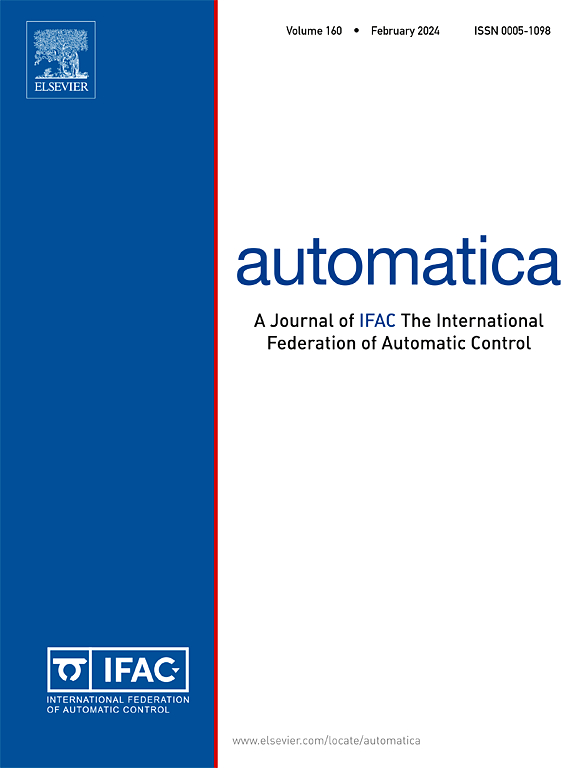不确定非线性时空控制系统的凝聚神经网络设计
IF 5.9
2区 计算机科学
Q1 AUTOMATION & CONTROL SYSTEMS
引用次数: 0
摘要
本文研究一类不确定非线性时空系统的基于近似的自适应控制问题。首先提出了一种凝固神经网络来逼近由系统状态和时变参数引起的非线性时空不确定性。与传统的神经网络近似结构不同,该神经网络明确地将时变耦合权分解为一个凝结权和一个时变扰动。采用标准的恒参数自适应律估计凝结权值,同时在网络结构内部处理剩余扰动。为了增强鲁棒性,平滑滑模类函数被嵌入到控制体系结构中,有效地衰减偏置项,特别是在参考跟踪场景中。结果表明,基于神经网络的自适应控制器保证了可调的有界误差跟踪性能,从而将鲁棒自适应控制的适用性扩展到复杂的时空系统,并优于现有的基于神经网络的方法。本文章由计算机程序翻译,如有差异,请以英文原文为准。
Congealed neural network design for uncertain nonlinear spatiotemporal control systems
This note is concerned with the approximation-based adaptive control problem for a class of uncertain nonlinear spatiotemporal systems. A congealed neural network (ConNN) is first proposed to approximate nonlinear spatiotemporal uncertainties arising from system states and time-varying parameters. Unlike conventional NN approximation structures, the ConNN explicitly decomposes the time-varying coupling weight into a congealed weight and a time-dependent perturbation. The congealed weight is estimated using a standard adaptive law for constant parameters, while the residual perturbation is handled within the network structure. To enhance robustness, smooth sliding-mode-like functions are then embedded into the control architecture, effectively attenuating bias terms, particularly in reference tracking scenarios. It is shown that the resulting ConNN-based adaptive controller guarantees adjustable, bounded-error tracking performance, thereby extending the applicability of robust adaptive control to complex spatiotemporal systems and outperforming existing NN-based approaches.
求助全文
通过发布文献求助,成功后即可免费获取论文全文。
去求助
来源期刊

Automatica
工程技术-工程:电子与电气
CiteScore
10.70
自引率
7.80%
发文量
617
审稿时长
5 months
期刊介绍:
Automatica is a leading archival publication in the field of systems and control. The field encompasses today a broad set of areas and topics, and is thriving not only within itself but also in terms of its impact on other fields, such as communications, computers, biology, energy and economics. Since its inception in 1963, Automatica has kept abreast with the evolution of the field over the years, and has emerged as a leading publication driving the trends in the field.
After being founded in 1963, Automatica became a journal of the International Federation of Automatic Control (IFAC) in 1969. It features a characteristic blend of theoretical and applied papers of archival, lasting value, reporting cutting edge research results by authors across the globe. It features articles in distinct categories, including regular, brief and survey papers, technical communiqués, correspondence items, as well as reviews on published books of interest to the readership. It occasionally publishes special issues on emerging new topics or established mature topics of interest to a broad audience.
Automatica solicits original high-quality contributions in all the categories listed above, and in all areas of systems and control interpreted in a broad sense and evolving constantly. They may be submitted directly to a subject editor or to the Editor-in-Chief if not sure about the subject area. Editorial procedures in place assure careful, fair, and prompt handling of all submitted articles. Accepted papers appear in the journal in the shortest time feasible given production time constraints.
 求助内容:
求助内容: 应助结果提醒方式:
应助结果提醒方式:


